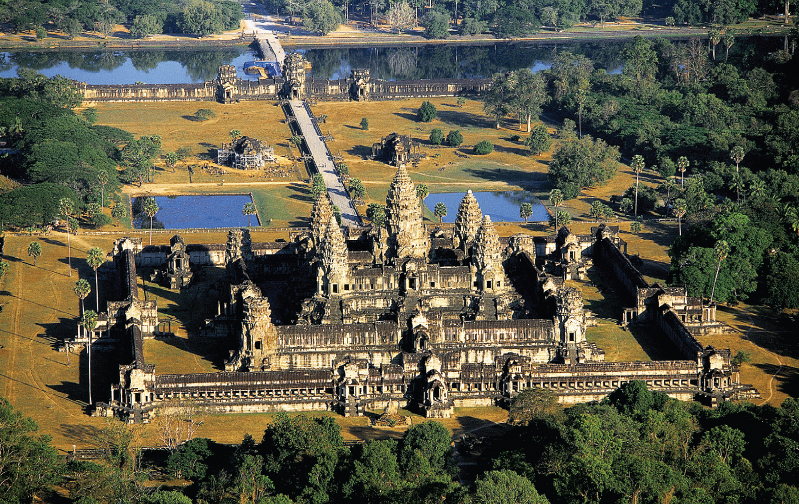How did states develop along the maritime trade routes of Southeast Asia and beyond?
MMUCH AS ROMAN CULTURE SPREAD to northern Europe and Chinese culture spread to Korea, Japan, and Vietnam, in the first millennium C.E. Indian learning, technology, and material culture spread to the mainland and islands of Southeast Asia. The spread of Indian culture was facilitated by the growth of maritime trade, but this interchange did not occur uniformly, and by 1400 there were still isolated societies in this region, most notably in the Pacific islands east of Indonesia.
Southeast Asia is a tropical region that is more like India than China. The topography of mainland Southeast Asia is marked by north-south mountain ranges separated by river valleys. It was easy for people to migrate south along these rivers but harder for them to cross the heavily forested mountains that divided the region into areas that had limited contact with each other. The indigenous population was originally mostly Malay, but migrations over the centuries brought many other peoples, including speakers of Austro-Asiatic (such as Vietnamese and Cambodian), Austronesian (such as Malay and Polynesian), and Sino-Tibetan-Burmese (such as Burmese and possibly Thai) languages, some of whom moved to the islands offshore and farther into the Pacific Ocean.

Angkor Wat TempleThe Khmers built several stone temple complexes at Angkor. This aerial view catches something of the scale of the largest of these complexes, Angkor Wat. (© Roy Garner/Alamy)
